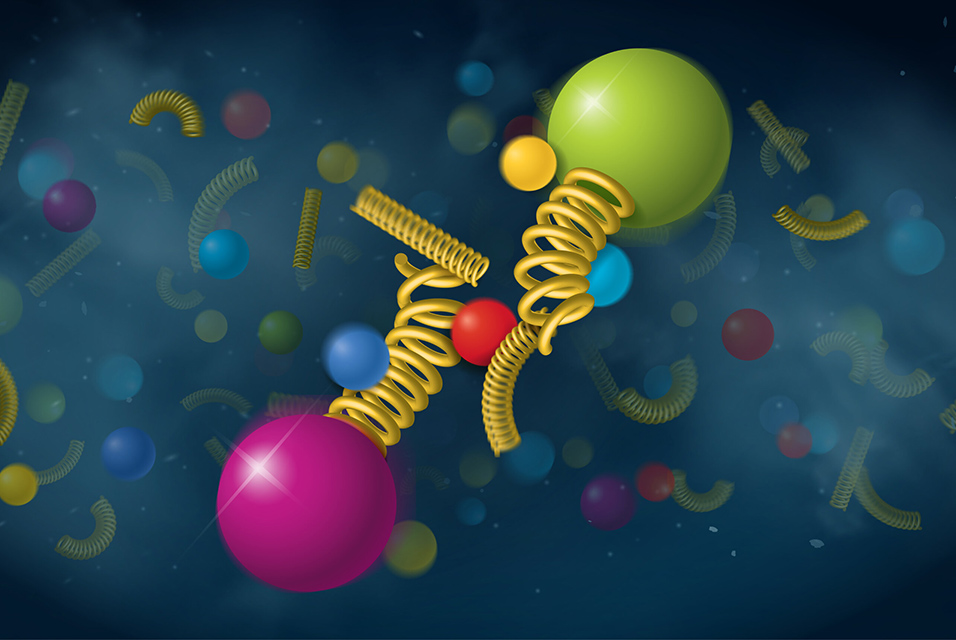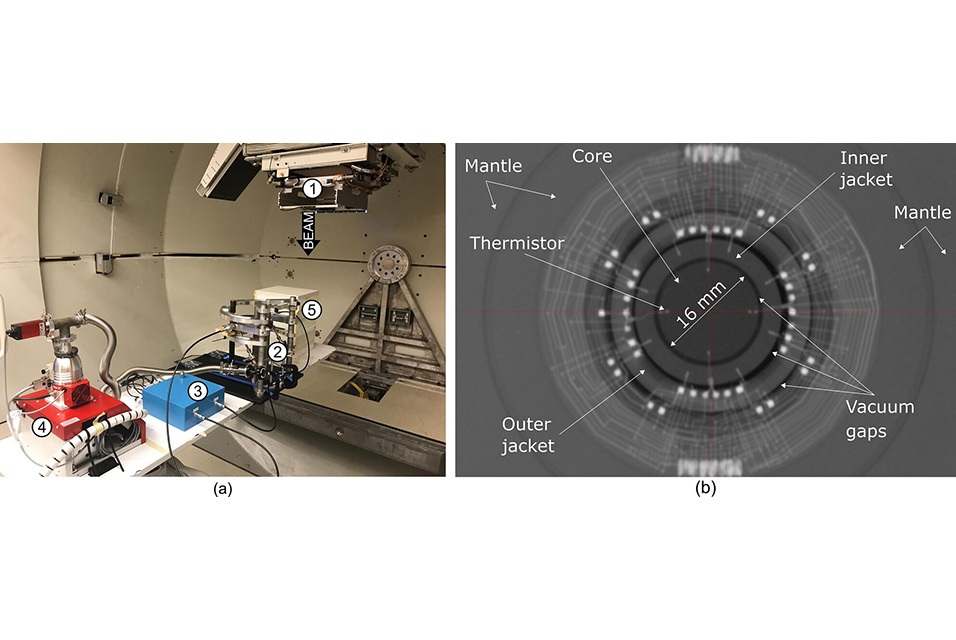UPTON, NY.- Scientists using the Relativistic Heavy Ion Collider (RHIC) to study some of the hottest matter ever created in a laboratory have published their first data showing how three distinct variations of particles called upsilons sequentially "melt," or dissociate, in the hot goo. The results, just published in Physical Review Letters, come from RHIC's STAR detector, one of two large particle tracking experiments at this U.S. Department of Energy (DOE) Office of Science user facility for nuclear physics research.
The data on upsilons add further evidence that the quarks and gluons that make up the hot matter—which is known as a quark-gluon plasma (QGP)—are "deconfined," or free from their ordinary existence locked inside other particles such as protons and neutrons. The findings will help scientists learn about the properties of the QGP, including its temperature.
"By measuring the level of upsilon suppression or dissociation we can infer the properties of the QGP," said Rongrong Ma, a physicist at DOE's
Brookhaven National Laboratory, where RHIC is located, and Physics Analysis Coordinator for the STAR collaboration. "We can't tell exactly what the average temperature of the QGP is based solely on this measurement, but this measurement is an important piece of a bigger picture. We will put this and other measurements together to get a clearer understanding of this unique form of matter."
Setting quarks and gluons free
Scientists use RHIC, a 2.4-mile-circumference "atom smasher," to create and study QGP by accelerating and colliding two beams of gold ions—atomic nuclei stripped of their electrons—at very high energies. These energetic smashups can melt the boundaries of the atoms' protons and neutrons liberating the quarks and gluons inside.
One way to confirm that collisions have created QGP is to look for evidence that the free quarks and gluons are interacting with other particles. Upsilons, short-lived particles made of a heavy quark-antiquark pair (bottom-antibottom) bound together, turn out to be ideal particles for this task.
"The upsilon is a very strongly bounded state; it's hard to dissociate," said Zebo Tang, a STAR collaborator from the University of Science and Technology of China. "But when you put it in a QGP, you have so many quarks and gluons surrounding both the quark and antiquark, that all those surrounding interactions compete with the upsilon's own quark-antiquark interaction."
These "screening" interactions can break the upsilon apart—effectively melting it and suppressing the number of upsilons the scientists count.
"If the quarks and gluons were still confined within individual protons and neutrons, they wouldn't be able to participate in the competing interactions that break up the quark-antiquark pairs," Tang said.
Upsilon advantages
Scientists have observed such suppression of other quark-antiquark particles in QGP—namely J/psi particles (made of a charm-anticharm pair). But upsilons stand apart from J/psi particles, the STAR scientists say, for two main reasons: their inability to reform in the QGP and the fact that they come in three types.
Before we get to reforming, let's talk about how these particles form. Charm and bottom quarks and antiquarks are created very early in the collisions—even before the QGP. At the instant of impact, when the kinetic energy of the colliding gold ions is deposited in a tiny space, it triggers the creation of many particles of matter and antimatter as energy transforms into mass through Einstein's famous equation, E=mc2. The quarks and antiquarks partner up to form upsilons and J/psi particles, which can then interact with the newly formed QGP.
But because it takes more energy to make heavier particles, there are many more lighter charm and anticharm quarks than heavier bottom and antibottom quarks in the particle soup. That means that even after some J/psi particles dissociate, or "melt," in the QGP, others can continue to form as charm and anticharm quarks find one another in the plasma. This reformation happens only very rarely with upsilons because of the relative scarcity of heavy bottom and antibottom quarks. So, once an upsilon dissociates, it's gone.
"There just aren't enough bottom-antibottom quarks in the QGP to partner up," said Shuai Yang, a STAR collaborator from South China Normal University. "This makes upsilon counts very clean because their suppression isn't muddied by reformation the way J/psi counts can be."
The other advantage of upsilons is that, unlike J/psi particles, they come in three varieties: a tightly bound ground state and two different excited states where the quark-antiquark pairs are more loosely bound. The most tightly bound version should be hardest to pull apart and melt at a higher temperature.
"If we observe the suppression levels for the three varieties are different, maybe we can establish a range for the QGP temperature," Yang said.
First time measurement
These results mark the first time RHIC scientists have been able to measure the suppression for each of the three upsilon varieties.
They found the expected pattern: The least suppression/melting for the most tightly bound ground state; higher suppression for the intermediately bound state; and essentially no upsilons of the most loosely bound state—meaning all the upsilons in this last group may have been melted. (The scientists note that the level of uncertainty in the measurement of that most excited, loosely bound state was large.)
"We don't measure the upsilon directly; it decays almost instantly," Yang explained. "Instead, we measure the decay 'daughters.'"
The team looked at two decay "channels." One decay path leads to electron-positron pairs, picked up by STAR's electromagnetic calorimeter. The other decay path, to positive and negative muons, was tracked by STAR's muon telescope detector.
In both cases, reconstructing the momentum and mass of the decay daughters establishes if the pair came from an upsilon. And since the different types of upsilons have different masses, the scientists could tell the three types apart.
"This is the most anticipated result coming out of the muon telescope detector," said Brookhaven Lab physicist Lijuan Ruan, a STAR co-spokesperson and manager of the muon telescope detector project. That component was specifically proposed and built for the purpose of tracking upsilons, with planning back as far as 2005, construction beginning in 2010, and full installation in time for the RHIC run of 2014—the source of data, along with 2016, for this analysis.
"It was a very challenging measurement," Ma said. "This paper is essentially declaring the success of the STAR muon telescope detector program. We will continue to use this detector component for the next few years to collect more data to reduce our uncertainties about these results."
Collecting more data over the next few years of running STAR, along with RHIC's brand new detector, sPHENIX, should provide a clearer picture of the QGP. sPHENIX was built to track upsilons and other particles made of heavy quarks as one of its major goals.
"We're looking forward to how new data to be collected in the next few years will fill out our picture of the QGP," said Ma.










